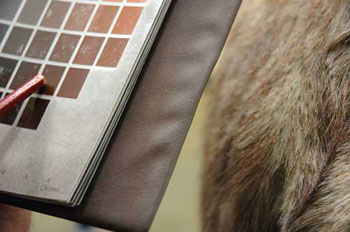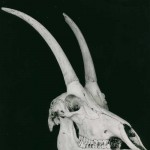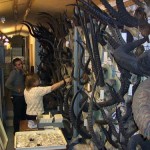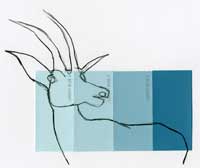Blue Antelope
biogeographical work by Kate Foster, Hayden Lorimer and Merle Patchett
Image © Naturalis RMNH / Kate Foster
An antler and horn collection sits in storage in the Hunterian Museum in Glasgow. Having been gathered across continents, these specimens have been arranged and dispersed repeatedly to facilitate the study of modern biology. We wanted to re-work this collection’s ‘BioGeoGraphies’ through processes of re-mapping and re-labelling. The antlers come from past practices, but our aim is to connect them to the present and future. One specimen captured our attention: the skull and horn cores of the blue antelope, an extinct animal. Extremely rare but little known, this object rewarded our investigation of its histories and presence.

Bluebuck Skull © Hunterian Museum/Kate Foster

Glasgow/Hamburg 1966 © Hunterian Museum
“Blue Antelope” is an extinct South African animal. The last representative of Hippotragus leucophaeus was shot c.1800 in what is now the Cape Province of the Republic of South Africa. A few other ‘Bluebuck’ remnants are to be found in old European collections, and closer to where it last lived, ‘Inputi’ remains have been found in archaeological sites in South Africa.
On scrutiny, the solidity of this item and its photographic record dissolved into ambiguities. Who knows about blue antelopes? How should it be called? Is the Hunterian specimen even a ‘Blaubok’ skull? What would the whole animal have looked liked? In what time-frame should its demise be cast? How was it Blue?
Full details can now be seen here.


